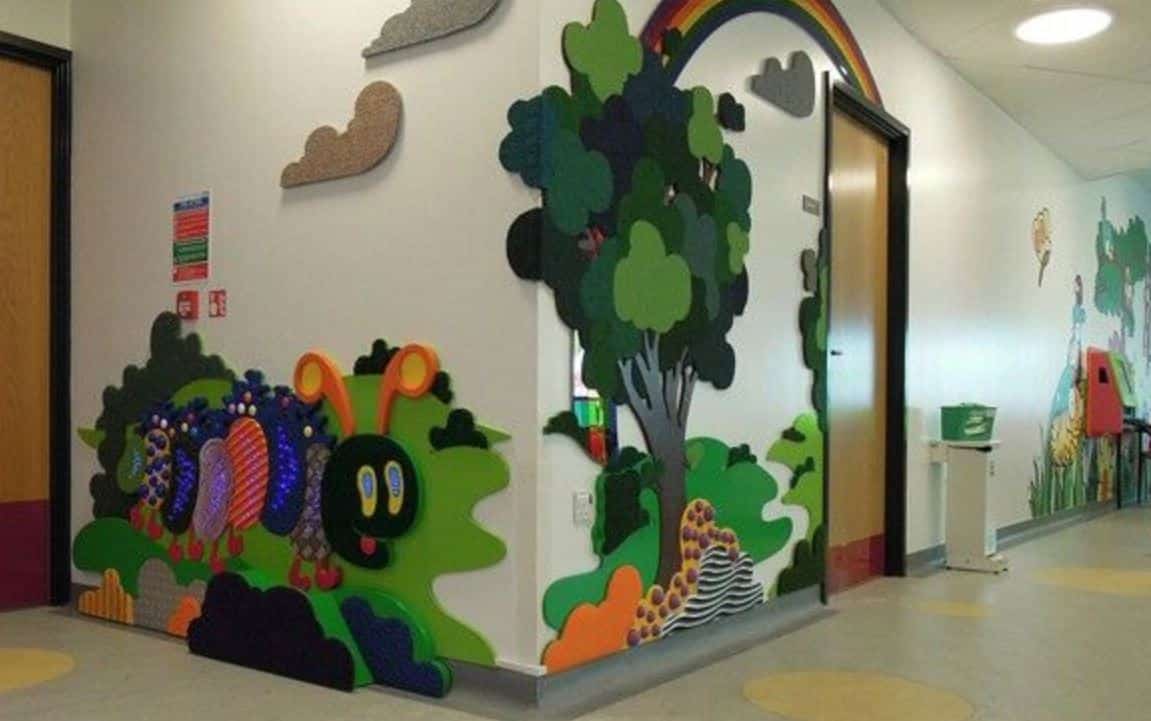
Although sensory spaces are becoming quite common in places that focus on children, like schools and libraries, they aren’t yet the norm in other frequently visited public areas like airports, hospitals and shopping centers. Unfortunately, some of these settings are bound to offer quite a bit of sensory overload for someone that is already struggling. When a designer or architect is able to include some form of sensory room in their initial design process, the task is mush easier than trying to figure out how to create one after construction has been completed.
How to focus on sensory experiences in interior design
The practice of considering sensory needs when designing public spaces is a fairly new trend, however it’s one that is growing in popularity and importance. As more people are finding themselves coping with anxiety, stress and both diagnosed and undiagnosed mental processing disorders, the ability to take a pause is more needed than ever.
When designing public buildings, a great way to support these individuals is to incorporate sensory spaces as part of the initial design process, rather than as an afterthought. Creating a dedicated room or space for a sensory experience is a great way to ensure all public spaces are safe and welcoming to everyone, including those who may have troubles processing more engaging or busy places.
Even outside of a sensory room a building designer can include features and experiences that appeal to a wider audience. Incorporating wood, warm colours and plants can help turn a cool and stark space into something cozier and more welcoming, while installing carpet and sound dampeners can help muffle distracting and overwhelming sounds, for example.
Benefits of sensory spaces in public buildings
Much like in a school setting, a sensory room in a public building is meant to create a calming environment for anyone who visits. The ability to step away from a high energy space and into a calmer and more relaxing one can help both children and adults to better manage their mental health. Some top benefits of creating a sensory space in a public area may include:
- Helps reduce overstimulation
- Reduces anxiety and offers the chance to learn new coping mechanisms
- Encourages visitors to take on tasks that they may otherwise avoid, like going shopping or booking a trip
- Offers a place for people to retreat to when the outside space is becoming too overwhelming
- Engages the senses, without overwhelming or stressing them
- Offers an engaging space for education and development
Types of sensory spaces and tools to include
When adding a sensory space to a building that is already being used, we’re left at the mercy of what sort of space is available for the purpose. However, when creating new buildings designers are able to incorporate a dedicated space right from the get go during the design process. There are a number of difference sensory room styles and activities that could be included, depending on how much space we’re given to work with. Some ideas might include:
A dark room – Geared more for those who have vision impairments, a dark room might feel almost like a glow room. Tools like UV lights, florescent colours and soft, cushy set against a dark and dim background can offer a relaxing and calm oasis from the chaos outside.
An interactive room, or interactive tools within the room – Interactive projectors and virtual reality games encourage visitors to remove themselves from their current reality and instead engage with their immediate surroundings. This can help reduce the anxiety tied to their experience outside of the sensory space.
A garden space – Although not traditionally considered a sensory space, a garden is an excellent way to incorporate sensory space tools in a unique way. Being outdoors is often a relaxing experience for most, and if the space is designed with comfortable furniture and an abundance of peace and quiet, along with tactile experiences it can be the perfect option.
A traditional calming room – The most common sensory space is one that includes a variety of calming tools like dimmable lights, comfortable furniture, sensory toys, tactile rugs and wall panels and interactive technology. This combination of activities is suitable for visitors of all ages and cognitive abilities, so remains a top choice in any public space.
Incorporating a sensory space is good for everyone
Although many people may not understand the need for a sensory space in a public building, the positive effects it can have will benefit everyone who comes in contact with someone who find value in it. The ability to step away from the anxiety-inducing needs of a public space and into an area that will allow them to breath and refocus their mind in a more manageable direction will help visitors approach the overstimulation outside in a healthier way.



